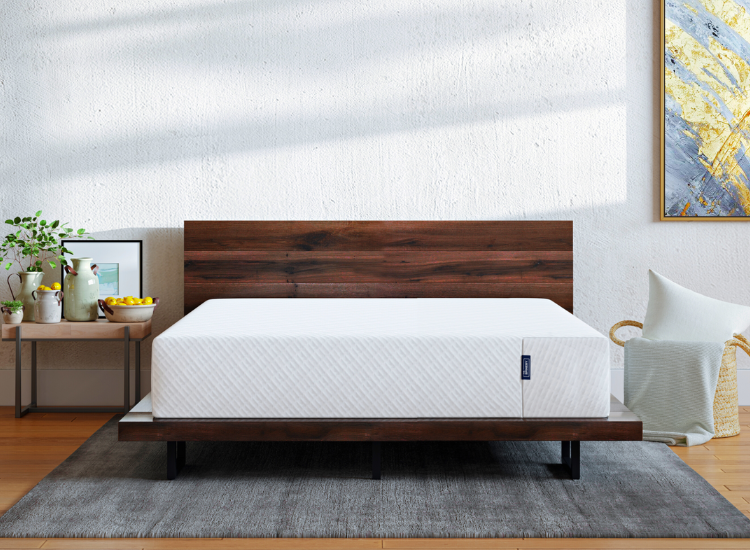How Long Does a Mattress Take to Expand After Being Uncompressed
When you order a new mattress online, it often arrives compressed and rolled up in a box. While this convenient packaging makes it easier to transport and set up, you might be wondering how long it will take for your mattress to expand to its full size and be ready for use. In this article, we will explore the factors that affect mattress expansion time, and discuss how low-quality foams with low density are the only mattresses that fit compressed in boxes.
Low-density foam mattresses that are compressed and shipped in boxes may take up to 24-48 hours to fully expand to their intended size. However, the exact time frame can vary based on the specific mattress and its materials.
How Long Does a Mattress Take to Expand?
Typically, a mattress takes between 24 to 72 hours to fully expand after being uncompressed. However, this time frame may vary depending on factors such as the type of foam used, the thickness of the mattress, and environmental conditions.
Factors Affecting Mattress Expansion Time
Foam Type
Different types of foam expand at different rates. Memory foam and latex foam mattresses usually take longer to expand compared to polyurethane foam mattresses.
Mattress Thickness
Thicker mattresses may take longer to expand compared to thinner ones due to the increased volume of foam that needs to decompress.
Room Temperature
Colder room temperatures can slow down the expansion process, as the foam may become more rigid in low temperatures. On the other hand, warmer temperatures can speed up the process.
Humidity
High humidity levels can cause the foam to expand more slowly, as the moisture in the air may cause the foam to become denser.
The Link Between Low-Quality Foams, Low Density, and Compression
Low-quality foams with low density are more likely to be compressed into boxes due to their less durable nature and lower overall quality.
Characteristics of Low-Quality Foams
Lack of Durability
Low-quality foams tend to break down more quickly and may not offer the same level of support as higher-quality foams.
Poor Support
Low-density foams may not provide adequate support for your body, leading to discomfort and poor sleep quality.
Faster Sagging
Mattresses made with low-quality foams are more likely to sag prematurely, which can lead to an uneven sleeping surface and potential pain points.
Compression of Low-Density Mattresses
Packaging Process
Low-density mattresses are more easily compressed due to their less rigid structure, allowing them to be rolled up and packaged in boxes for easier shipping and handling.
Potential Risks
While the compression process can be convenient, it may also pose potential risks for low-density mattresses. Over time, repeated compression and decompression may weaken the foam and reduce its overall lifespan.
Advantages
Despite the risks, there are some advantages to compressing low-density mattresses. The compact packaging makes it easier to transport and set up, which can be particularly beneficial for those living in smaller spaces or moving frequently.
Tips for Expediting Mattress Expansion
To help your mattress expand more quickly, follow these simple tips:
- Unbox your mattress in a well-ventilated room with moderate temperature and humidity levels.
- Gently massage or walk on the mattress to help loosen the foam and encourage it to expand.
- Rotate or flip the mattress periodically to ensure even expansion.
7-10 Shipping across Ireland Order Online Video GuideOrthopedic MattressDoctor's Recommendation
Fast Irish Delivery
Product DetailsResearch-based Design
Recommended ForBack Discomfort
Conclusion
In conclusion, mattresses typically take 24 to 72 hours to fully expand after being uncompressed, with factors such as foam type, mattress thickness, room temperature, and humidity influencing the expansion time. Low-quality foams with low density are more likely to fit compressed in boxes due to their less durable nature and lower overall quality. While there are some advantages to compressing these types of mattresses, such as easier transportation and setup, it’s essential to be aware of their potential drawbacks, including reduced durability and poor support. By understanding the factors affecting mattress expansion and taking steps to expedite the process, you can ensure a comfortable and supportive sleeping surface.
FAQs
Q1: How long does it take for a compressed mattress to expand?
A1: Generally, it takes between 24 to 72 hours for a mattress to fully expand after being uncompressed. However, this time frame can vary depending on factors like foam type, mattress thickness, and environmental conditions.
Q2: Why do low-quality foams with low density fit compressed in boxes?
A2: Low-quality foams with low density have a less rigid structure, making them easier to compress and package in boxes for shipping and handling.
Q3: What are the potential risks of compressing low-density mattresses?
A3: Compressing low-density mattresses may cause the foam to weaken over time, reducing its overall lifespan and potentially leading to issues like sagging and poor support.
Q4: How does room temperature affect mattress expansion time?
A4: Colder room temperatures can slow down the expansion process, as the foam becomes more rigid in low temperatures. On the other hand, warmer temperatures can speed up the process.
Q5: Are there any advantages to compressing low-density mattresses?
A5: The main advantage of compressing low-density mattresses is easier transportation and setup. The compact packaging can be particularly beneficial for those living in smaller spaces or moving frequently.





0 Comments